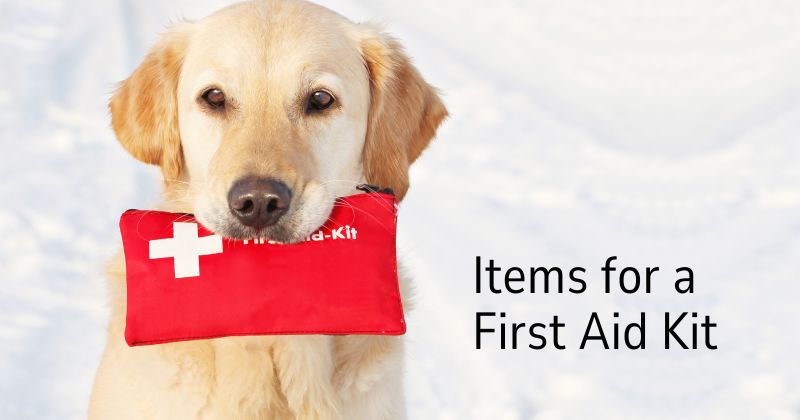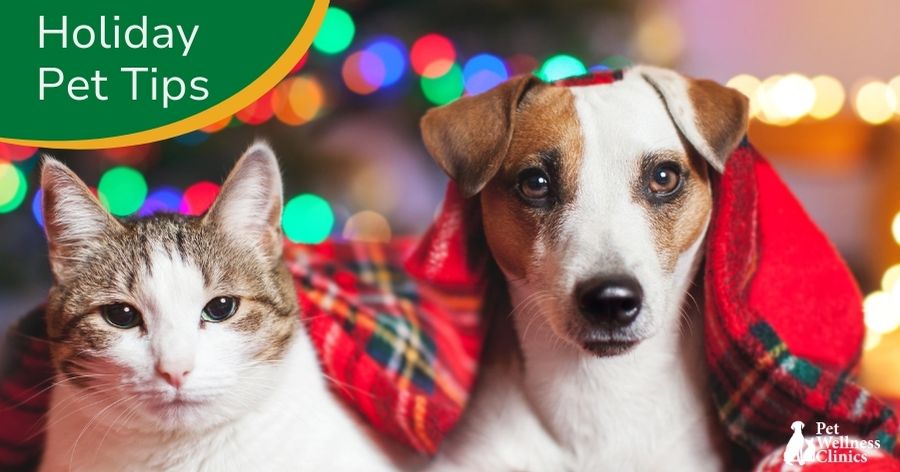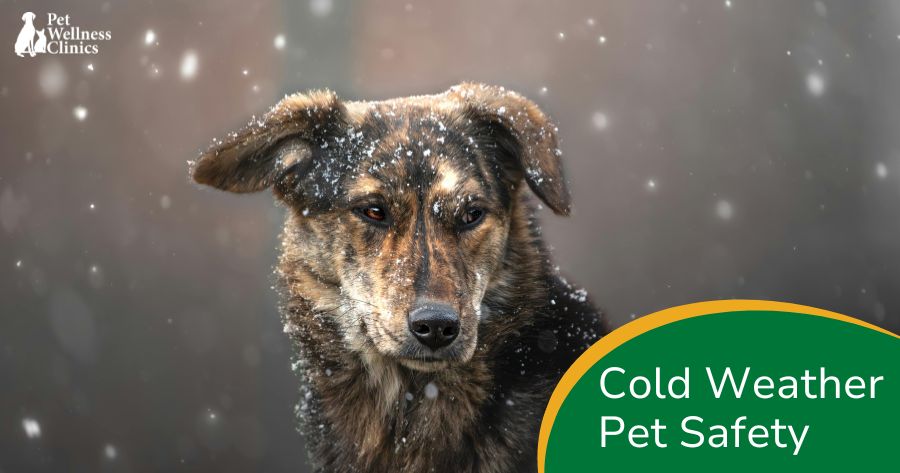
Before getting a puppy or kitten, it’s a good idea to “pet proof” your house by removing all choking hazards and storing away all dangerous chemicals. Unfortunately, even in the most structured households, pets can still be mischievous and clumsy, making them susceptible to accidents. As a responsible pet owner, it’s a good idea to have a basic knowledge of pet first aid, along with keeping a pet-specific first aid kit on hand. While you should always get to a veterinarian in the event of an emergency, a pet first aid kid can help you provide immediate relief when your pet is in dire need.
Your pet-specific first aid kit will be similar to a human’s first aid kit. We recommend including:
Along with the items above, your veterinarian can recommend items specific to your pet, especially if your pet has certain allergies, seizures, or other risk-factors.
If your dog has been involved in a road accident or hit by a vehicle, the first thing you should do is be cautious of other cars. When approaching your dog, talk gently and avoid sudden movements to keep your pet as calm as possible. If it is feasible, put a leash and muzzle on your pet before moving them. If your pet can still walk, you should still take them to the vet immediately, even if they don’t appear to be in pain, as there might be internal injuries.
If your dog cannot walk, small dogs should be picked up by placing one hand on the front of the chest, and the other under the hind legs. For larger dogs, try to create a makeshift stretcher out of a coat or blanket. If the dog is paralyzed, there is the possibility of a spinal injury, in which case you should try and find something rigid, like a board to gently slide under your pet. Once on the board, cover him with a blanket to reduce the amount of heat loss.
If your dog is bleeding, you should try and keep him as quiet and comfortable as possible. Start by putting a tight bandage around the wound. If you don’t have a first aid kit, you can use a towel or clothing. If the blood is soaking through, add another tight layer. If you cannot add a bandage to the area of bleeding, apply firm pressure to the wound and get to the vet as soon as possible. If you have bandages, start with a non-adhesive dressing over the wound, then add a layer of cotton wool, which should then be covered with a cotton bandage. When bandaging legs, include your pet’s foot in the bandage to avoid swelling.
In the case that your dog has a broken bone, you should deal with any bleeding, but do not use a splint. Splints can add unnecessary pain for your pet, causing the bone to rupture the skin. From here, you should confine your pet, then transport him to the vet as soon as possible.
The best way to treat a burn is by running cold water over the area for at least five minutes, while contacting the vet. Do not apply ointments or creams. However, if there is a delay on getting to the vet, you should apply a saline soaked dressing, while keeping the pet warm.
If you notice your dog is having trouble breathing, pawing at its mouth, or making choking sounds, you should calmly look into the pet’s mouth to see if there is a visible foreign object. If so, gently try to remove the object with pliers or tweezers, being careful to not push the object further into the throat. If you can’t reach the object, get it to the vet immediately.
If you can’t remove the object and your pet collapses, put both of your hands under the rib cage, and apply quick pressure. If this does not work, put your pet on its side, while firmly hitting its rib cage with your open palm about 4 times. Similar to the heimlich for humans, you are trying to force the air out of your pet’s lungs to expel the object. Keep repeating this motion until the object is expelled, or you get to your vet’s office.
Poisoning is an emergency situation that can be confusing for pet owners, especially if you are not there to see what your pet has consumed. You should always pay attention to ensure your dog never consumes certain human foods that cause toxicity, like chocolate, garlic, onions, avocado pits, and so forth. For household items, it’s also a good rule of thumb that if it could harm a human when ingested, then it will be harmful for pets. For instance, cleaning products, rodent poisons, and antifreeze are all household items that you should keep out of your pet’s reach.
If your pet has consumed something that could be toxic, or if you notice your pet seizing, losing consciousness, having trouble breathing, or throwing up, you should take them to an emergency veterinarian as soon as possible. If you know what substance your pet has consumed, you should find its packaging and bring it with you to the vet. If you think the toxicity might have occurred from chewing plants, try to figure out which plant and if you don’t know what type, consider taking a close up photo of the foliage and bring that to the visit for plant identification.
In the event that your pet needs first aid, you should try and secure your pet, until proper veterinary care can be reached. It’s also important to remember that first aid is not a substitute for emergency veterinary care.
.png)

